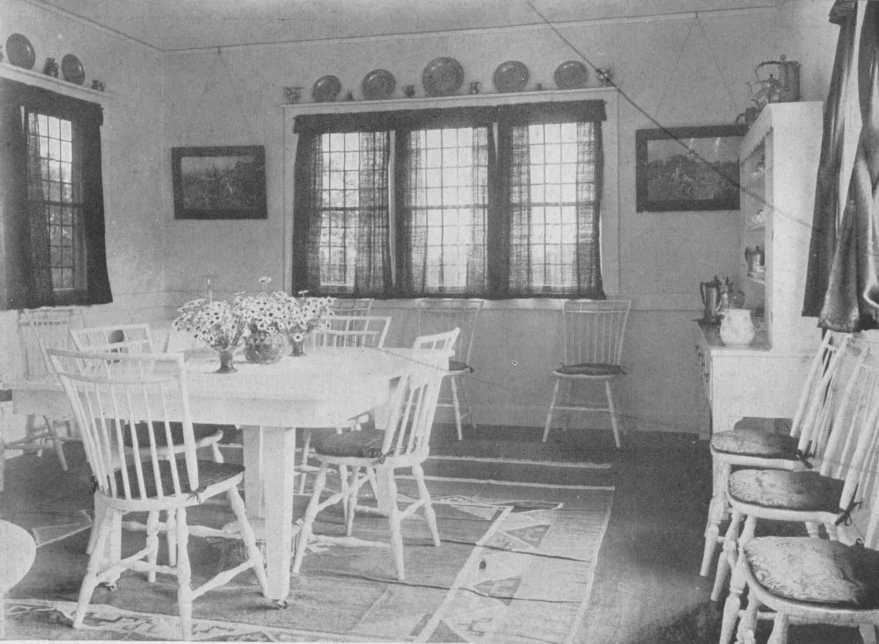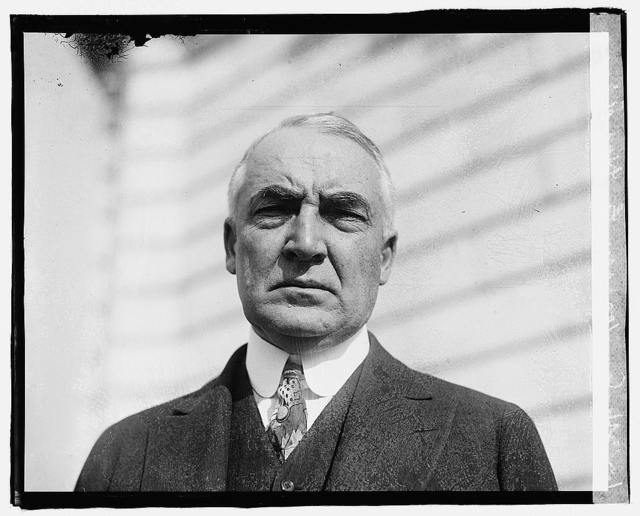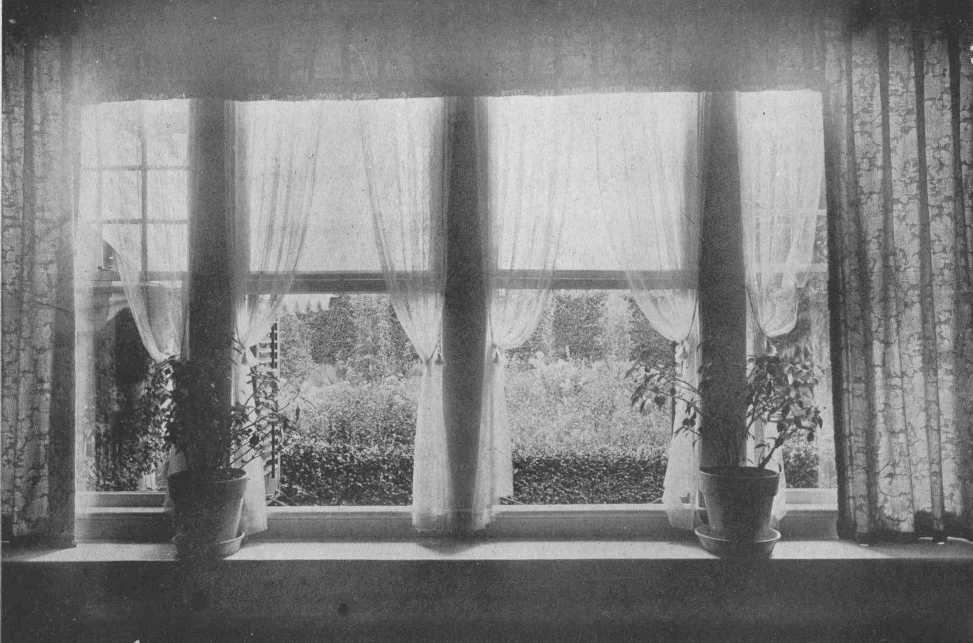From October 9th , through the 14th of 1922, the Harding White House worked with the Better Homes Campaign and U.S. governors to stage the Better Homes Demonstration Week. The project was borne from the efforts of the Better Homes Campaign, which was headed by Marie Mattingly Meloney, to advocate for the construction of affordable and aesthetic homes. In this post, I will briefly examine the background of the Better Homes Campaign before going through some notable excerpts from the White House’s Better Homes In America Demonstration Week handbook – which included written remarks by the Vice President Calvin Coolidge and Secretary of Commerce Herbert Hoover, who would go on to serve as the 30th and 31st Presidents of the United States in coming years.
You will find the written remarks of Calvin Coolidge and Herbert Hoover in the second and third parts of this series.

We will be referring to the Better Homes in America Plan Book for Demonstration Week often in this article, so I recommend having it open to follow along. You can download it in various formats from Project Gutenberg or read it comfortably in your browser.
- What Was the Better Homes Campaign?
- Better Homes in America Demonstration Week Comes Together
- The Advisory Committee for Better Homes in America Demonstration Week
- The Plan For the Demonstration Week
- Contemporaneous Articles About the Better Homes in America Demonstration Week
- A Bit of Humor About “Weeks”
- The Better Homes Campaign Going Forward
- Conclusion
What Was the Better Homes Campaign?
The Better Homes Movement took off in 1922 and was led by an American women’s magazine called The Delineator, which in turn was led by its editor, Marie Mattingly Meloney. There is much to be said for and about the movement, and I may write more on the subject in the future, but for the purpose of this article, we will learn about the movement and its goals through the national Better Homes Campaign Demonstration Week in October 1922.
According to the October 7, 1922 issue of the Washington Herald, the inspiration for the movement derived from “a chance remark” by then-President of the United States, Warren G. Harding. The paper reported:
[Harding] remarked one day that he would like to see on exhibition a model house in every community in the United States.
As the paper tells it, Marie Meloney and the staff at The Delineator thought this was a fine idea and began a national movement. The paper described the goal of Meloney’s Better Homes Campaign:
The campaign is primarily educational. Its aim is to make the homes of America more attractive, more comfortable, and more convenient.
The Wikipedia article on the movement notes that another factor in its development was a critical shortage of homes in the wake of World War I.
Better Homes in America Demonstration Week Comes Together
The October 6, 1922 issue of the Washington Times noted that the Better Homes Campaign received endorsements from President Harding, Commerce Secretary Hoover, and other prominent officials in the U.S. Government. But how did the Demonstration Week come together?

The Plan Book begins with a letter from President Harding’s secretary to Meloney dated July 21, 1922. In the letter, Harding’s secretary wrote that he had been directed by Harding to convey the President’s “earnest endorsement” of the Better Homes Campaign, which Harding recognized “has been launched by the Advisory Counsel and is being carried on by representative women of America.” It was the view of Harding, according to the President’s secretary, that:
[T]he campaign is of particular importance, because it places great emphasis not only upon home ownership, which he regards as absolutely elemental in the development of the best citizenship, but upon furnishing, sanitation, and equipment of the home.
The secretary concluded by stating that it was the view of the President that the home merited as much care and attention as factory conditions, which the government had worked to improve at great expense. The secretary, speaking for the President, wrote:
There are twenty millions of house-keepers in America. For them, the home is their industrial center as well as their place of abode, and it is felt that altogether too little attention has been paid to lightening the labors and bettering the working conditions of these women.
Harding took office in 1921, so assuming that the newspaper account about the Campaign having been inspired by an off-handed remark of his was correct, we can imagine that the remark was delivered in 1921 or early 1922. The timing of the letter and the fact that the Campaign began in 1922 suggests that it was endorsed by the President from its inception.
Letter From Secretary of Agriculture Henry C. Wallace
Three days after President Harding’s letter was conveyed to Meloney, the U.S. Secretary of Agriculture, Henry C. Wallace, sent a separate letter to the head of the Better Homes Movement.
Wallace recognized that Meloney and her committee had already secured the cooperation of numerous Governors, and that the Department of Agriculture stood ready to offer assistance. This letter most likely marked the official commencement of preparations for the Demonstration Week in October. It is reprinted in the Plan Book.
The Advisory Committee for Better Homes in America Demonstration Week
At some point between Harding’s letter and October 9, the Demonstration Week for the campaign was organized. The Guide Book lists the members of the Advisory Council for the Demonstration Week (this Advisory Council applies only to the national week, and not to the overall Campaign):
- Calvin Coolidge, Vice-President of the United States
- Herbert Hoover, Secretary of Commerce
- Henry C. Wallace, Secretary of Agriculture
- James John Davis, Secretary of Labor
- Dr. Hugh S. Cumming, Surgeon-General of the United States Public Health Service
- Dr. John James Tigert, U.S. Commissioner of Education
- C.W. Pugsley, Assistant Secretary of Agriculture
- John M. Gries, Director Division of Building and Housing, Dept. of Commerce
- Julius H. Barnes, President of the Chamber of Commerce
- John Ihlder, Director of Housing Conditions at the Chamber of Commerce
- Donn Barber, Fellow at the American Institute of Architects
- John Barton Payne, Chairman of the Central Committee of the American Red Cross
- Livingston Farrand, Chairman of the National Health Council
- Mrs. Thomas G. Winter, President of the General Federation of Women’s Clubs
- Mrs. Lena Lake Forrest, President of the National Federation of Business and Professional Women’s Clubs
For her part, Meloney was recognized as Secretary of the Demonstration Week for New York City. The evidence in the Guide Book indicates that while Coolidge was the honorary Chairman of the Advisory Council, Hoover, who served as its president, played the most significant role in organizing the week’s festivities of the members of the Harding Administration.
The Plan For the Demonstration Week
The Plan Book goes into granular detail about how various subcommittees for the Demonstration Week should conduct their demonstrations. For those who want to study the plans in detail, I invite you to consult the original Plan Book, which we linked to in the introduction. In the following subsections, I will give a brief overview – with reference to the Plan Book – on the events that took place for the Demonstration Week.
Suggested Events
The Plan Book provided a list of “suggested events” to the many subcommittees planning events for the Better Homes in America Demonstration Week. You will find the list reproduced below with minor formatting changes to enhance readability:
- Sermons, Addresses and Sunday School talks in all churches on the Sunday preceding the opening of the exhibition.
- Color slides relating to home owning, home management, home furnishing and decoration to be shown in moving picture houses.
- Four-Minute Talks on thrift, home owning, home financing, home furnishing, home decoration, etc., in all moving picture houses.
- Block Parties in front of the Demonstration Home. Lights for the block party may be supplied from the headlights and searchlights of automobiles properly arranged.
- Window Dressing Contests for hardware merchants, house furnishing merchants, department stores, etc.
- Erection of Miniature Home, suitable for a girl’s playhouse, on Public Square—this playhouse may be given as first prize to the girl of school age writing the best essay on “Why You Should Own Your Home.”
- Showing special Better Homes films in all moving picture houses.
- Prizes for the best example of a Model Kitchen in the community.
- Cooking Demonstrations by Home Demonstration Agent, or some well-known local cook, High School or Normal School student.
- Singing by Choir or Quartette on porch of Demonstration Home each evening at about 7:30 and 8:00 o’clock.
- Guessing contest as to how many visitors enter Demonstration Home; (b) Prize for best essay by a boy on Home Owning; (c) Prize for best essay by a girl on Home Equipment or Furnishing; (d) Prize for best landscape design for Small Home by High School or Art student.
- Radio Program at Demonstration Home, or elsewhere in the city.
- Lectures on Home Equipment, Decoration or Furnishing by experts, in local auditorium. It has been found that admission to these lectures may be charged, to help defray the expense of lecturers.

As we will see a bit further down in the most, many of the recommended events were held and written about in contemporaneous local newspapers. But first, let us examine some interesting points from the Plan Book about specific events.
Movies
The Plan Book includes a July 19, 1922 letter from Will H. Hayes, president of the Motion Picture Producers & Distributors of America, Inc., to Meloney. He expressed his interest in the campaign on behalf of his trade organization and offered assistance in producing films for the public for the week. Hayes concluded his letter with a personal touch:
I have a little home in Sullivan, Indiana, that we are most anxious to equip in just exactly the best way, and I am as much interested as any one could be in learning how this should be done, so I am looking forward to October 9-14 with much interest.
Will H. Hayes
Specific Guidance
The Plan Book concludes with detailed guidance for how to outfit demonstration homes for the Better Homes in America week. It goes into detail regarding internal furnishing and outward-facing aspects.
After providing home-decoration guidance, the Plan Book concludes with notes on zoning – which express Commerce Secretary Hoover’s view that zoning laws should strive to “give[] everyone who lives or does business in a community the reasonable enjoyment of rights.”
Contemporaneous Articles About the Better Homes in America Demonstration Week
To begin, we ought to describe what was done for the Demonstration Week in a general sense. The October 7, 1922 article in The Washington Herald that noted Harding’s early involvement in the organization explained:
Under the sponsorship of mayors, governors, and the home-makers themselves, the women of the States, hundreds of thousands of people, are going to have opportunity to visit and profit [from seeing] model homes.
(Astute readers of the article should take note of a very well-placed advertisement on the page.)
The demonstration homes were not only available for visitors during the week. The August 19, 1922 issue of the Richmond Times-Dispatch noted that then-Governor of Virginia E. Lee Trinkle and his wife made an unannounced visit to several demonstration homes and came away impressed with their aesthetic quality. Trinkle had been an early supporter of the movement.
Better Homes in America Demonstration Week achieved a degree of national recognition leading up to its commencement. On September 6, 1922, the Ogden Standard-Examiner reprinted a statement recognizing the week from then-Governor of Utah, Charles Rendell Mabey. Mabey described the home as the basis for Utah’s prosperity but expressed dismay at what he thought was a low numbers of homemakers and homeowners in the State.
The October 6, 1922 issue of the Washington Times noted that prominent women were delivering public lectures and remarks for the week. In California, the La Habra Star reported on October 11, 1922, that the local Women’s Club was arranging a program for the occasion on October 12.
Different outlets had different focuses. The DeKalb Daily Chronicle noted during the Demonstration Week on October 12, 1922, that “American cities and towns, will devote careful thought to the selection of attractive and suitable window curtains and other hangings.” While window dressing demonstrations were one of the activities recommended in the Plan Book, I hope that the organizers in DeKalb County also remembered to take care of the design of the interior of the demonstration homes.
A Bit of Humor About “Weeks”
The endless “Infrastructure Week” has been a running joke in American politics in recent years. The jokes about every week being a week for something long tradition – dating back to at least October 13, 1922, if the issue of the Roanoke World News published on that day is any indication:
There seems not to be enough weeks to go around, so that every drive to promote a good cause cannot get a whole week to itself. For instance, this is both Accident Prevention Week and Demonstration Week for Better Homes in America movement, and it also develops that some hat manufacturers in New York have made this a Derby Week as part of their campaign to bring about a bit more of spruceness in the sartorial habits of the male of the species.
The humorous article focuses primarily on Derby Week, but it seems somewhat notable that it referenced the Better Homes in America movement without any additional description. While we cannot say for certain, the lack of additional description does seem to suggest that the paper assumed that its readers had at least passing familiarity with the movement – an assumption that would align with then-Governor Trinkle’s early support in Virginia.

While “Weeks” can proliferate out of control, I will note that all three weeks referenced by the Roanoke World-News were for worthy causes – even the humorous Derby Week – which the paper described as seeking “to rescue the derby hat from the state of innocuous desuetude into which it has fallen of late.” Every cause needs a champion.
The Better Homes Campaign Going Forward
By all extant accounts, the Better Homes in America Demonstration Week was a success. The Better Homes Campaign would achieve greater success and recognition in subsequent years, during which Herbert Hoover would continue to play an active role. There were a large number of articles about the Campaign published in the 1920s – according to Elephind’s excellent newspaper database – with more articles being published in the 30s. Wikipedia notes that Meloney talked to then-First Lady Elanor Roosevelt in September 1934 on national radio regarding the campaign.
Conclusion
This article is part of a small series on the Better Homes in America campaign in 1922. Articles on remarks for the Demonstration Week by Herbert Hoover and Calvin Coolidge are being published here at The New Leaf Journal on October 10 and October 11, 2021 (series link).